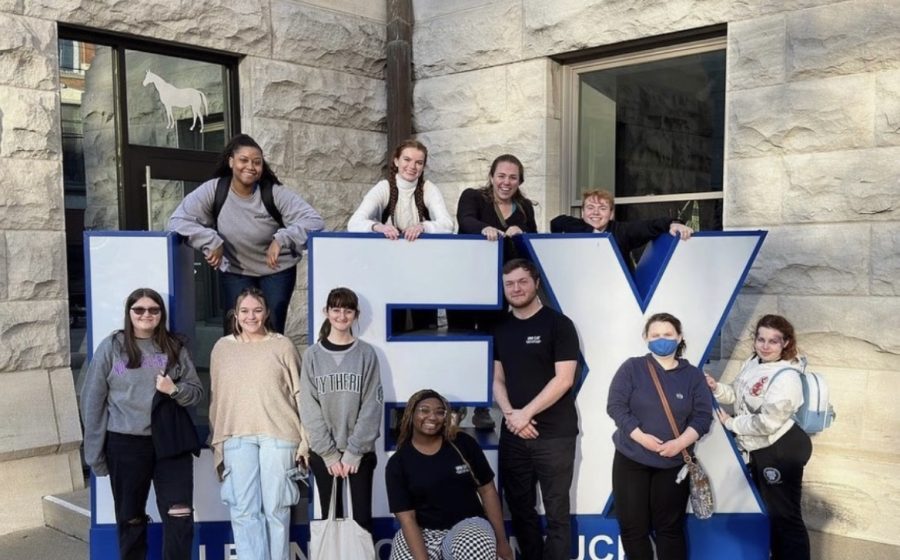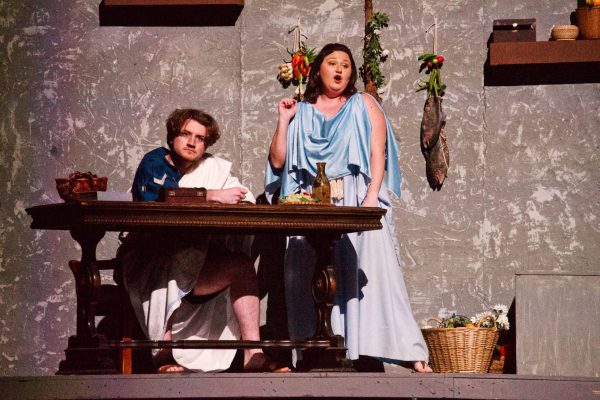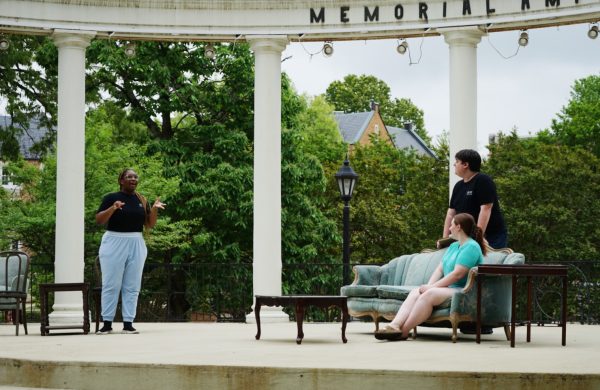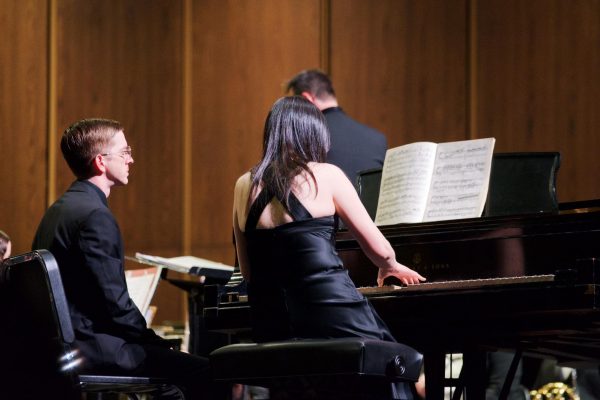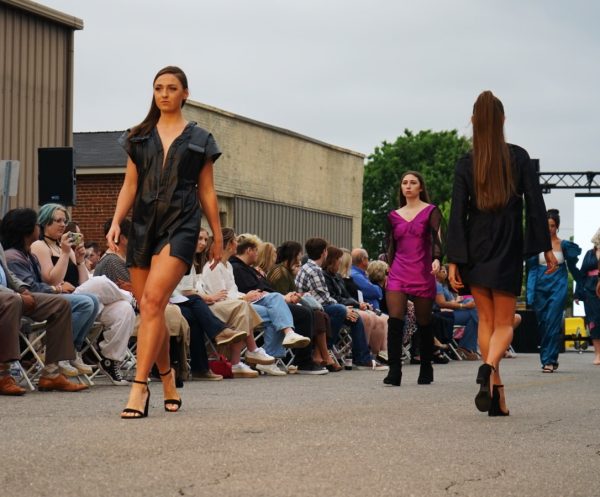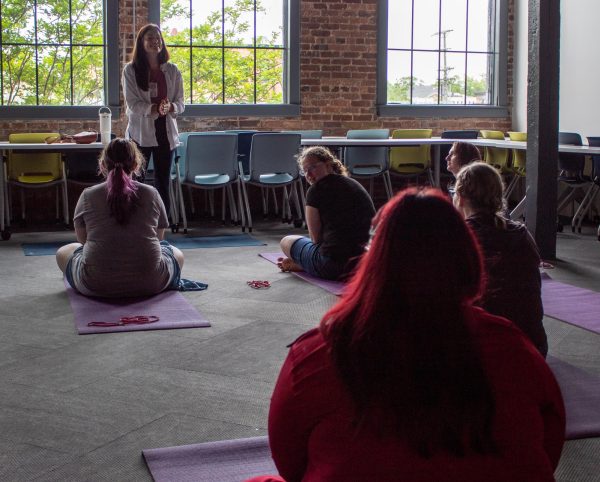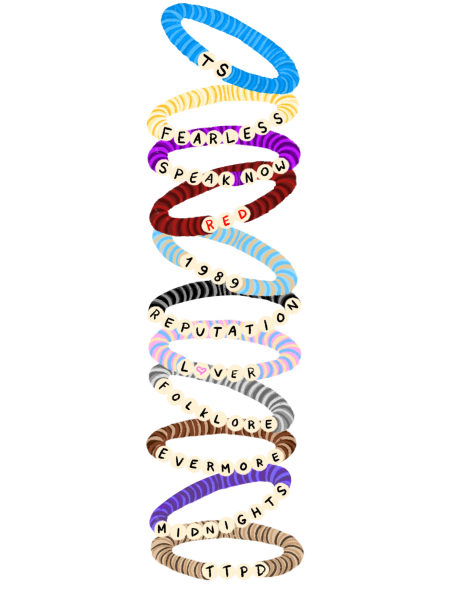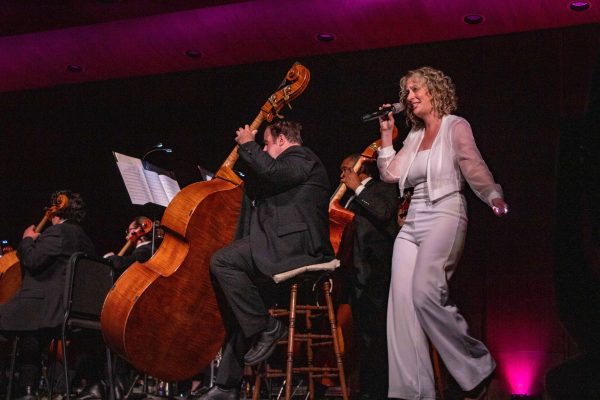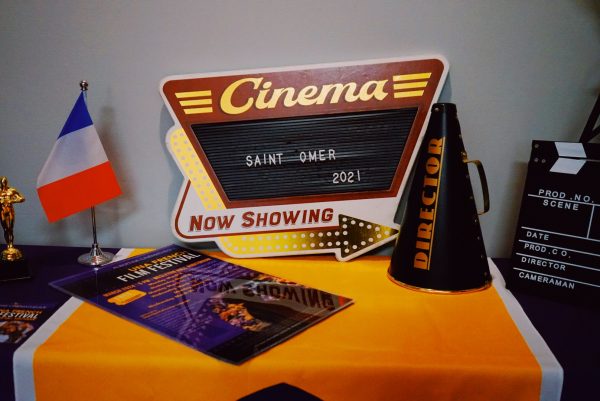CAT performs “The Folklore Project” at SETC
March 16, 2023
The Cinematic Arts and Theater department at UNA showcased their original piece “The Folklore Project” at the South-Eastern Theater Conference’s Fringe Festival at The University of Kentucky on Mar. 2-5.
SETC is not a judged competition, but a showcase of pieces that are devised by the actors performing them or put some kind of new, innovative touch on an already existing work. In addition to the Fringe Fest, which features various universities, it coincides with the national theater competition for high school students in the southeast. UNA was given the opportunity to network with high school students and invite them to join their program in the future. University performers were able to share feedback with one another, while showing younger students what their programs have to offer.
“I think SETC was a good opportunity for us, and it showed us what professional theater and traveling could be like if that’s something we wanted to pursue,” said Ella Neal, who wrote and performed as Juliana, as well as other supporting characters. “My favorite part was getting to see all the other shows and be inspired by what they had to bring to the table. I loved seeing the range and the diversity in all of the shows.”
“The Folklore Project” was originally performed at UNA in October 2022. It is the first play that visiting professor Abigail Dillard directed for CAT. She encouraged students to step out of their comfort zone by devising their own work instead of performing a show that had already been written. She proposed the idea that they submit the show to SETC at the beginning of last semester, which gave them all a goal to work towards as they crafted the show.
The show’s purpose is to present different stories or “folklore” in northern Alabama. It follows six different plot lines, each crafted by a student. Each of the student actors also played supporting roles in one another’s stories. The cast started out by researching local legends and stories and choosing the ones they thought should be told. Altogether from the research to the first performance in October, the show was devised in only five weeks.
One cast member, Jarrod Stocks, a 22-year-old freshman who began his college journey at the beginning of the fall semester, used his family’s story to write his section of the show. His grandfather, Charlie Stocks, worked at NASA in Huntsville for over 40 years, and his parents met while working at NASA. Although this did not take place in Florence directly, hundreds of people from the Shoals moved to Huntsville to be a part of what was going on at NASA. Having worked in the museum at the Space and Rocket Center for the last three years, Stocks ran into one problem: the men and women who were part of the revolutionary projects that took place in Huntsville did not see their life’s work as anything other than a job. As many of them are getting older, their memories are fading and their stories are not being preserved or documented through art.
Neal’s piece followed Juliana, the leader of a local girl gang who boldly embraces feminine power, even when faced by bullies. Kennedy Edwards wrote a sequence about multiple generations of a family in Florence who own a local store. Sam Davis wrote a piece based on the story of the Dead Children’s Playground in Huntsville.
One actor from the original cast chose not to reprise their role for the tour version of the show, leaving a “significant hole in the show,” according to Stocks. However, the remaining actors were able to adapt to the lost member and other challenges by changing a few elements of the show. Stocks was required to play more of the male characters, including multiple characters that occurred in the same scenes. He states he was changing clothes every time he was off stage and had to change in a small prop closet, because the SETC set had no dressing rooms.
“Having challenges and obstacles in the way breeds invention and creativity,” said Stocks.
According to Stocks, they were able to keep 95% of the original props used, but they made the addition of LED color changing light bulbs, which added color to the NASA scene. Instead of having the shadow background, which is exclusive to the Black Box, they changed the ending sequence to involve the spirits of the characters, who were shown as shadows behind sheets and expressed through ribbons as they worked together to defeat the villain who had plagued all of their lives. Through a method known by actors as “flocking,” they shortened the runtime to the required 45-minute length by replacing the lengthy musical transitions with group movements that symbolized the passage of time.
Stocks and Neal both agree that while the version performed at UNA and the “tour version” were different, neither one was better than the other, yet they both share feelings of sadness when saying goodbye to their characters. The word Neal uses to describe the experience is “rewarding.”
“Taking off the costume and putting everything in the truck was rewarding,” Neal said. “It was rewarding to be able to come back, but of course there’s a bit of post-show sadness knowing that was the last time we were going to see those characters.”
The actors agree that both performances of “The Folklore Project” were memorable and they will always value the experience they gained by writing and performing their own work, and that they grew together as a team as well as individually as actors.
“Passing energy on stage: to me that’s what acting is best at. It’s not about pretending, it’s not about being a character. It’s about passing the energy that you get from the audience to the next actor and watching it flow through the stage like a spirit going from person to person and back to the audience at the end,” Stocks said. “The energy that we had put into the production, the emotions that we had felt throughout every single stage of it, were absolutely rewarded by the love and admiration we had for one another when we put up the show.”


